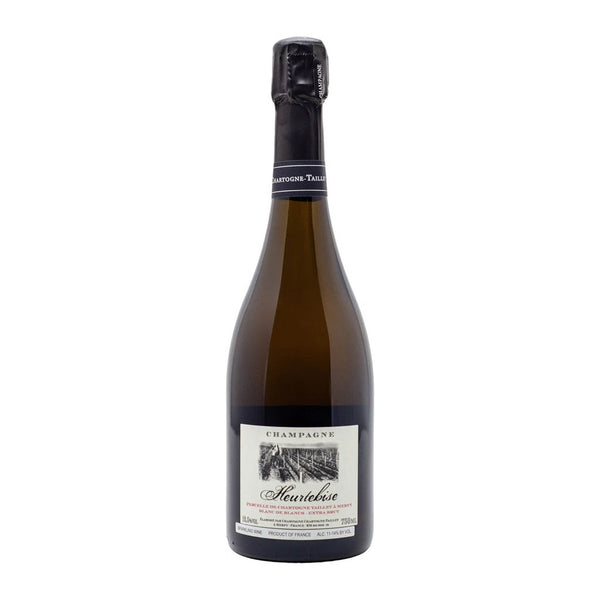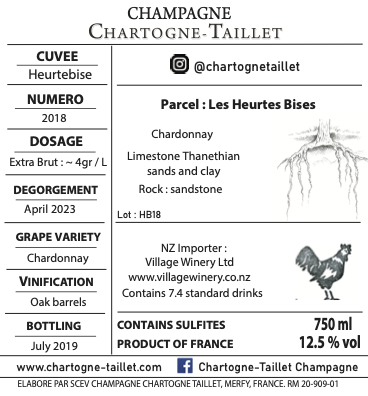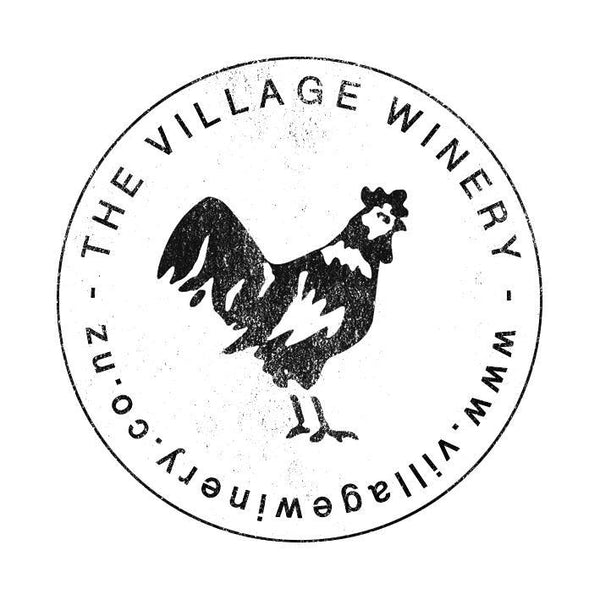Champagne Chartogne-Taillet Heurtebise BdB Extra Brut 2017 750ml
100% Chardonnay.
Single Vineyard 'Heurtebise', Merfy
Vinification: Barrels
Dosage 4.5g/L
Disgorged from February 2021.
Only 60 btls for NZ
Reviews:
The 2017 is not yet reviewed but here are some general notes;
Top rated tasting notes: by Richard Juhlin
• Chartogne-Taillet Heurtebise 2016 - 95
• Chartogne-Taillet Les Couarres 2017 - 94
• Chartogne-Taillet Saint-Thierry 2018 - 94
Chartogne-Taillet - by Richard Juhlin: - "Already in the 1600s, Fiacre Taillet was a wine-grower in the small village of Merfy in the Massif de Saint-Thierry planted in mostly sandy soils, while Chartogne-Taillet was formed in 1920. Today, Chartogne-Taillet is still a family business. Alexandre Chartogne run a quality-controlled property with access to very old grapevines—even a little pre-phylloxera rootstock. Alexandre was educated in Burgundy and has a strong faith in the recipe: low yield equals high quality. He also worked with Anselme Selosse and returned to the family estate in 2006. He took full control the following year, and his influence has elevated the domaine to the top ranks of grower-producers in the region.The grapes come from 11,5 hectares in Merfy, Chenay, and Saint Thierry. Fiacre is a brilliantly refreshing, elastic, potent wine with a deliciously concentrated young fruit. Truly genuine terroir character is, of course, missing but this deficiency is well compensated for by its tart, rich, fruity cannonade. The Clos des Barres is a beautiful and super intense pure Pinot Meunier. Close to 4 stars today."
The Wine Advocate: Stephan Reinhardt
"As you might know, the single vineyard Champagnes of Chartogne-Taillet are entirely based on vintages, but not declared as such. Only the cuvée Sainte-Anne is a classic blend of vineyards, varieties and vintages, and a perfect Champagne to discover the very dry but complex Chartogne style. Chartogne-Taillet's 12 hectares of more and more organic (or biodynamic) farmed vineyards are located in and around the village of Merfy, in the Montagne de Reims, where they grow on sandy, sandstone and tuff soils. Alexandre's experiments with concrete eggs for the fermentation pays off in the greatly pure and mineral Heurtebise Blanc de Blancs. Other containers are made of oak and stainless steel. All wines are fermented without the addition of cultured yeasts and the malolactic fermentation is also allowed to occur naturally. After the ageing process of eight to 18 months, the wines are bottled unfiltered. The dosage is no religion here, but tends to be rather low. "
The Wine Advocate: William Kelley
"In the beginning was Anselme," recounts Alexandre Chartogne, when I ask him to tell the story of his meteoric rise to number among the stars of the grower Champagne movement. "It was Anselme Selosse who taught me that a winegrower's responsibility is to understand his terroir. So I came home to Merfy and started digging holes." Chartogne duly discovered that his soils were very different from those of the Côte de Blancs, finding inter-fingering layers of marine sands, loess, sandstone and clay in around ten different configurations in his different parcels. Those differences, he noted, corresponded to the delimitation of Merfy's climats, and looking back to the village's pre-revolutionary history, Chartogne attributes that precision to the Benedictine monks who once farmed this region—harking back to a terroir-focused viticultural era when wine growing in Champagne had more in common with wine growing in Burgundy. Today, Alexandre Chartogne is trying to recapture that spirit.
Chartogne, it will be clear, is a thoughtful man, seriously committed to letting each of his various parcels express its own identity. In the vineyards, that means no herbicides, pesticides or synthetic fertilizers, as well as cultivated soils—half of his parcels are plowed by horse. In the winery, fermentation takes place with ambient microflora, and Chartogne favors wooden barrels or demi-muids. Dosage is minimal. That translates to a vinous, incisive style that's increasingly concentrated and tightly wound. Clearly differentiated by site, Chartogne's wines sometimes show a delicate patina from their time in barrel, but that tends to integrate with a little bottle age. Like the wines of his mentor, Anselme Selosse, these are very far from being fruit-driven wines despite their scale and power, for they're undeniably mineral and soil-driven. Since Chartogne is keeping back more and more wine, the quantities of his elusive single-vineyard bottlings are smaller and smaller, and these are not easy Champagnes to find. But happily, his largest cuvée, the tank-fermented Saint-Anne, is an excellent offering that remains great value, and I see no substance in accusations that its quality has deteriorated as Chartogne produces more and more lieu-dit bottlings.










